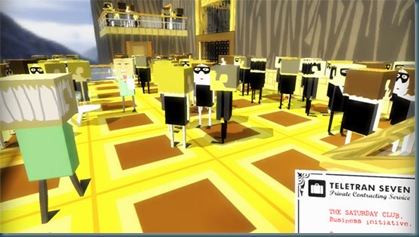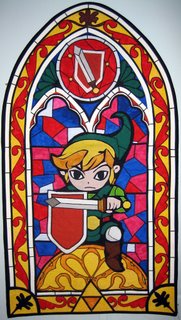The premise fairly simple premise of the Synek draft system is that growlers basically suck; glass ones are fragile, metal ones are expensive, and drinking a half-gallon of high gravity beer in two days isn’t always reasonable. The standard solution is to buy or build a kegerator but hauling ponies and even sixtels around can literally be a pain, and what if you want more variety?
The solution Synek has come up with is to replace the growler with a recyclable single-use bag (bladder may be more appropriate) that they call a cartridge. Joining the cartridge is the functional cap which is a screw-on cap with two ports and a pressure-relief valve. The larger of the ports is attached to a tube that goes into the cartridge.
When the cartridge is filled with a tap adapter (more on this later) the bartender clicks the line from the tap onto the large port using a short piece of tubing with a quick release fitment. A slightly longer tube connects similarly to the other port, allowing foam and any air to escape the container. This allows for longer storage, Synek boasts of 3+ months of shelf life but I haven’t been patient enough to let beer sit around that long.
When you bring your bag of beer home be careful as it’s somewhat durable but not indestructible (Synek advises to treat it like a baby and not shake, drop, or leave it in a hot car.) Once you do get it in the door that’s when similarities to a growler experience really end. Instead of putting the beer in a standard fridge the Synek draft system provides a refrigerated compartment that is tailored to fit a full cartridge. Controls and display to the right of the tap allow you to adjust the serving temperature of the beer depending on the style.
Once the cartridge is nestled in the compartment you open the door behind the temperature readout and set the CO2 pressure on the regulator before clicking the CO2 and draft lines to the ports on the functional cap. From there you close all the doors and wait for things to get cold before pouring a beer. Pouring is simple and the draft system comes with a flow control tap that allows you to adjust the pour to your liking.
At least that’s how it would work in a perfect world.
When I got my unit home and unboxed, everything seemed to be in order but I quickly ran into a couple of snags. Firstly, the Synek requires a small bit of assembly; the tap needs to be screwed onto the body, which is simple enough, and the CO2 regulator has to be connected to the supply tubing. This was my first stumbling block as the tubing is just inflexible enough to make pushing it past the ferrule on regulator nipple a difficult task. The manual proved to be unhelpful as it glossed over this step with what amounted to “connect this thing to the other thing,” but some quick Googling, a glass of hot water, and a grippy pair of pliers later I was back on track. Just in time to run into my second problem.
After all that trouble the regulator I was shipped didn’t work. After some emailing and delays due to understaffing and production rates, I was finally shipped a working regulator. Now the only problem was finding beer.
The same understaffing that resulted in delays in getting a replacement regulator also resulted in breweries getting tap adapters later than expected. Luckily after some tweeting and patience I was able to help Scott, the brewmaster at East End Brewing, christen his newly arrived adapter.
For this review I filled five cartridges at different times. With the exception of my third bag where I misthreaded the functional cap, everything went smoothly at the brewery. Even the misthreaded bag got home with minimal spillage and a couple good pours before finally resulting in an empty CO2 tank.
Attaching the cartridge to the Synek is easier said than done. In the interest of efficiency and footprint, the refrigerated compartment is very snug and allows for very little room to maneuver tubing. This can often make it difficult to close the door and also leads to kinking. There’s an art to making the connections work with minimal hassle.
The CO2 regulator requires some fiddling with as well. It’s supposed to be a set it and forget it kind of affair but minor adjustments are almost always required. Filling the tank is at once simple and complicated. It’s a 20oz tank similar to those used for paintball which should be fillable at any sporting goods store with some caveats. The first is that not all sporting goods stores are willing to fill tanks used for beverages (the Synek beer glass logo is printed on the tank) because of the second caveat which is that CO2 that isn’t sold as food grade can theoretically have some nasty impurities. That being said, the chances of impurities depend largely on your local industry and the “if it tastes funky, pour it out” rule of thumb should apply. If you’re still uncomfortable, food grade CO2 may be available at a premium or you can find out where your local sporting goods shop sources their CO2 as odds are they fill tanks for commercial draft systems from the same bulk tank.
Finding a brewery that will fill Synek cartridges can isn’t always easy. Synek maintains a map of partners on its website but there have been reports of inaccuracies either due to a server’s ignorance or the fill kit going missing. The solution is to bring your own kit but that can have mixed results.
All things considered, maintenance is fairly minimal. To clean the lines between cartridges you simply rinse and fill the spent bag with warm water and then run it through the system. A home brewing sanitizer can also be used if things seem unusually dirty. You should keep an eye on your lines though, specifically on the supply tube attached to the functional cap. In my testing a particularly sticky stout discolored the tubing and ultimately ended up contaminating it, resulting in a funky taste to everything served with it. A more thorough cleaning immediately after finishing the beer would probably have saved me some time and money. It's also nice to have a filling kit available during cleaning since the various fitments can be used to open valves for drainage.
When everything is working right the Synek draft system is great. A full gallon of beer isn’t going to fuel any all-night ragers but with a backup it’s nice for casual gatherings. Right now it’s the very definition of an enthusiast product; if you’re passionate about fresh, local craft beer, like variety, and don’t want to feel forced into drinking a growler in one go, then the Synek is well worth looking into. If, on the other hand, you’re happy drinking canned and bottled beer or the prospect of drinking a half gallon of beer in one or two sittings is a welcome idea (all the time) then you can probably wait for the next iteration in the next year or so.






